Showing 13–24 of 30 results
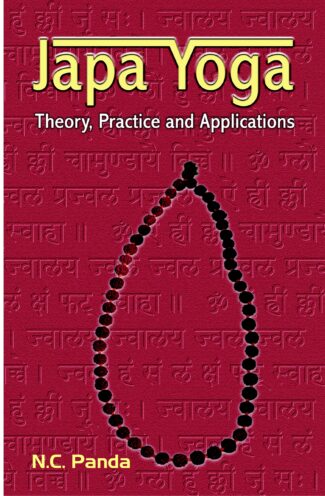
The repetition of God’s name or of a mantra containing God’s name, otherwise known as japa, is a religious ritual, generally meant for the emancipation of the self. This book on japa-yoga has not neglected this aspect. But, it is a more comprehensive and a broad-range booking effects of japa-applications on a scientific footing, a successful attempt made for the first time.
The repetition of Gods name or of a mantra containing Gods name, otherwise known as japa, is a religious ritual, generally meant for the emancipation of the self. The present book on japa-yoga has not neglected this aspect. But, it is a more comprehensive and a broad-range book. That japa is a branch of yoga, an easily attainable one and simultaneously a very effective one, has been emphasized. The theory and methology of japa in Patanjala Yoga, in the Vedas, in the Vedanta and in the Tantra, in the perspective of knowledge and devotion, have clearly been outlined. The book has been divided into three Chapters. Chapter 1 expounds the theory of japa based on classical scriptures. Chapter 2 presents the practice of japa in a clearly graspable style, easy to be followed by the readers. Chapter 3 deals with the applications of japa for the uplift of human personality and spirituality, for attaining the liberation of the self, for mental peace and tranquillity, and for physical health inclusive of the prevention and treatment of diseases, both physical and mental. The last part of this book tries to explain the effects of japa-applications on a scientific footing, a successful attempt made for the first time.
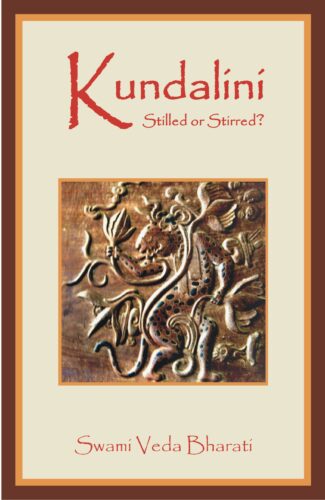
This book portrays kundalini from its psycho-physical and spiritual implications and impacts and tries to alleviate some misconceptions about the nature of cakras the consciousness centres of human body. It deals at length with the phenomena of higher levels of spiritual evolution raising the kundalini and opening the cakras.
“Tantra, an exposition of Sri-vidya, is a thread of Vedic tantu. This ray of the light of consciousness folds upon itself as a coil (kundala) forming the coiled energies of the conscious universe, thus becoming kundalini.
This book looks at Tantra from a different perspective against the common view of it being more associated with its carnal/sexual nature. Tantra is the “art of celibacy”. Human beings are a wave in the ocean of Consciousness and this wave passes through our psycho-physiological complex compound, forming the personal kundalini. All sensations in human body are manifestations of the presence of kuõóalinã. Our desires are the signals released by the kundalini. Different psycho-physical apparatuses are plugged into it like electric plugs in different socket.
This volume, while portraying kundalini from its psycho-physical and spiritual implications and impacts, tries to alleviate some misconceptions about the nature of cakras — the consciousness centres. It deals at length with the phenomena of higher levels of spiritual evolution — “raising the kundalini” and “opening the cakras” — helping one drop all mental habit patterns to achieve “liberation”.
This book is a “must read” for the practitioners of Yoga and all who want to take their spiritual life to a new realm. “

This book portrays kundalini from its psycho-physical and spiritual implications and impacts and tries to alleviate some misconceptions about the nature of cakras the consciousness centres of human body. It deals at length with the phenomena of higher levels of spiritual evolution raising the kundalini and opening the cakras.
“Tantra, an exposition of Sri-vidya, is a thread of Vedic tantu. This ray of the light of consciousness folds upon itself as a coil (kundala) forming the coiled energies of the conscious universe, thus becoming kundalini.
This book looks at Tantra from a different perspective against the common view of it being more associated with its carnal/sexual nature. Tantra is the “art of celibacy”. Human beings are a wave in the ocean of Consciousness and this wave passes through our psycho-physiological complex compound, forming the personal kundalini. All sensations in human body are manifestations of the presence of kuõóalinã. Our desires are the signals released by the kundalini. Different psycho-physical apparatuses are plugged into it like electric plugs in different socket.
This volume, while portraying kundalini from its psycho-physical and spiritual implications and impacts, tries to alleviate some misconceptions about the nature of cakras — the consciousness centres. It deals at length with the phenomena of higher levels of spiritual evolution — “raising the kundalini” and “opening the cakras” — helping one drop all mental habit patterns to achieve “liberation”.
This book is a “must read” for the practitioners of Yoga and all who want to take their spiritual life to a new realm. “
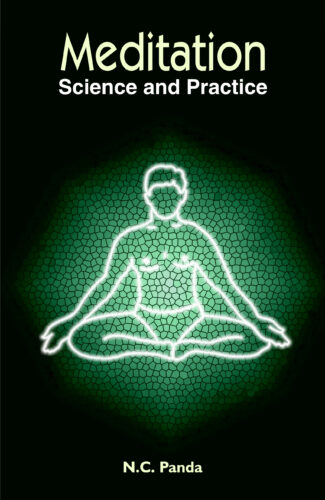
Prof. Panda discusses the eight limbs of Patanjala Yoga, emphasizing on meditation in its three stages of dharana, dhyana and samadhi. Delving into Patnnjalis classical yogic theories, he gives detailed guidelines on the practice of meditation and explains in scientific terms the benefits surfacing from the practice of meditation.
Yoga, contrary to the popular perception, is not merely a system of physical culture. It is, in fact, a uniquely Indian discipline aiming to bring about the union of an individual spirit with the Universal Spirit: the Cosmic Consciousness through what in Yoga is known as samadhi, a state of profound meditation. Patanjalis Yoga-sutram, written sometime around the second century bc, is the first, systematic, at once authoritative presentation of Yoga: in both its theoretical and practical aspects. Professor N. C. Panda, who has had a lifetime involvement with the science and practice of Yoga, here outlines the eight limbs of Patanjala Yoga, with added emphasis on meditation in all its three stages: dharana, dhyana, and samadhi; and how this ancient system of bodily and mental control is found to have a strong scientific basis. Offered in three parts, his book focuses, in Part 1, on the practice of meditation, with detailed guidelines concerning the relevant yogic postures, yogic breathing and breath-control. Part 2 presents Patanjalis classical yogic theories, showing how these are validated: both theoretically and experimentally, by modern science. In Part 3, the author explains, in pure scientific terms, the physical, psychic, therapeutic and spiritual benefits surfacing from the practice of meditation. Though based on the principles of classical yoga, Professor Pandas book is truly a brilliant effort to treat Yoga as an advanced science. Including a comprehensive glossary of Sanskrit technical terms and numerous illustrations, it is invaluable to medical scientists/researchers/anyone interested in Yogic Meditation and how it can give a holistic, healthy and creative life.

Prof. Panda discusses the eight limbs of Patanjala Yoga, emphasizing on meditation in its three stages of dharana, dhyana and samadhi. Delving into Patnnjalis classical yogic theories, he gives detailed guidelines on the practice of meditation and explains in scientific terms the benefits surfacing from the practice of meditation.
Yoga, contrary to the popular perception, is not merely a system of physical culture. It is, in fact, a uniquely Indian discipline aiming to bring about the union of an individual spirit with the Universal Spirit: the Cosmic Consciousness through what in Yoga is known as samadhi, a state of profound meditation. Patanjalis Yoga-sutram, written sometime around the second century bc, is the first, systematic, at once authoritative presentation of Yoga: in both its theoretical and practical aspects. Professor N. C. Panda, who has had a lifetime involvement with the science and practice of Yoga, here outlines the eight limbs of Patanjala Yoga, with added emphasis on meditation in all its three stages: dharana, dhyana, and samadhi; and how this ancient system of bodily and mental control is found to have a strong scientific basis. Offered in three parts, his book focuses, in Part 1, on the practice of meditation, with detailed guidelines concerning the relevant yogic postures, yogic breathing and breath-control. Part 2 presents Patanjalis classical yogic theories, showing how these are validated: both theoretically and experimentally, by modern science. In Part 3, the author explains, in pure scientific terms, the physical, psychic, therapeutic and spiritual benefits surfacing from the practice of meditation. Though based on the principles of classical yoga, Professor Pandas book is truly a brilliant effort to treat Yoga as an advanced science. Including a comprehensive glossary of Sanskrit technical terms and numerous illustrations, it is invaluable to medical scientists/researchers/anyone interested in Yogic Meditation and how it can give a holistic, healthy and creative life.

This uncovers the secrets of mind so that one can awaken, and prepares one for meditation. It breaks a lot of myths about meditation. Human machine has three brains and the book elaborates that using these minds, one can keep away from diseases, stress, ageing, etc. It also teaches one how to transform negative thoughts to creative ones, and how to use the calm mind and intuition to solve our problems that circumvent us in our day-to-day life.
Mind and Meditation opens the doors of wisdom for people interested in knowing what meditation is and how to meditate.
In this book, Dr Amit Jain uncovers the secrets of our mind, so that we can awaken. In simple words, this book prepares us for meditation. It breaks lots of myths related to meditation. The book reveals that the human machine has not one but three brains and how by using the three brains in a balanced way one can keep oneself away from diseases, stress, aging, etc. The book also throws light on different types of minds and how they trap us and destroy our intuition.
Overall the book calls the reader to learn how to transform negative thoughts. For those wanting to achieve a calm mind, it’s a blessing. It also teaches how to use this calm mind and intuition to solve our problems creatively. Insightful and life changing!
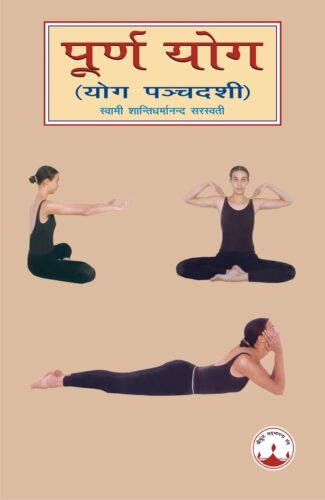
Yoga is a serious and a comprehensive subject. It is difficult to bring completeness in it. Swami Shanti Dharmanand has tried to give the complete information on health and yoga beginning at its initial stage. Different forms of yogic postures with their health benefits have been mentioned in detail.
Yoga is a deep and extensive topic to explain, and attaining absolute perfection in it is extremely difficult. Swami Shantidharmananda Saraswati has however tried to enrich this concise book with complete information for a beginner, a patient and even for an expert. He has shed into it his intellect and experience of Upanishadic and literary sources matching with scientific research besides the basic knowledge obtained from his Guru and Rishis. Though this book has been written by taking ashtanga-yoga as a base, all types of asanas and procedures of yoga have been accommodated in a disciplined manner. Secrets of hathayoga, rajayoga, kriyayoga, japayoga, layayoga, kundalini yoga, nadayoga, svarayoga, etc. have been summarized in brief. This is the reason why it has been named as Purna Yoga. Since all the topics related to yoga have been divided into fifteen chapters, this book has been referred to as Yoga Pancadashi as well. Purna Yoga is a guide for a blissful life as well as a very useful tool for every individual in the society.

This volume encapsulates the advice of Krishna to Arjuna at the Mahabharata battlefield, through the poetic narration of Vedic seer Vasistha in Yoga-Vasistha, which is different from the traditional one found in Mahabharata. It melds together the wisdom of two great epics Bhagavad-Gita and Yoga-Vasistha providing unparalleled access to the great truths and insights of yoga and liberation.
Arjunas predicament of fighting and killing his own kinsmen and gurus in the Mahabharata War, and Lord Krishnas advice and thus the formers enlightenment are well known. Moving away from the traditional Mahabharata narration, Yoga-Vasishtha presents a different narrative approach by the Vedic seer, Vasishtha about the KrishnaArjuna dialogue to his pupil Rama as if it would happen eventually in the remote future.
While the Bhagavad-Gita accounts for Krishnas teaching of eighteen forms of yoga in 700 verses, Vasishtha narrates sixty stories in more than 28,000 verses, making Yoga-Vasishtha as one of the lengthier and most lyrical philosophical discourses in the world. In the course of the narrative, Vasishtha summarizes how to attain liberation, the essence of the Bhagavad-Gita, in seven chapters.
This lucid translation of Mokshopaya, a section of the Yoga-Vasishtha, encapsulates the message of Krishna, through the poetic narration of Vasishtha. Arjuna experiences the dissolution of his ignorance, overcomes his attachments and arrives at a point of freedom. The author, by choosing to highlight the story of Arjuna from two sources, has melded together the wisdom of two great epics Bhagavad-Gita and Yoga-Vasishtha providing the reader with unparalleled access to the great truths and insights of yoga and liberation.

This volume encapsulates the advice of Krishna to Arjuna at the Mahabharata battlefield, through the poetic narration of Vedic seer Vasistha in Yoga-Vasistha, which is different from the traditional one found in Mahabharata. It melds together the wisdom of two great epics Bhagavad-Gita and Yoga-Vasistha providing unparalleled access to the great truths and insights of yoga and liberation.
Arjunas predicament of fighting and killing his own kinsmen and gurus in the Mahabharata War, and Lord Krishnas advice and thus the formers enlightenment are well known. Moving away from the traditional Mahabharata narration, Yoga-Vasishtha presents a different narrative approach by the Vedic seer, Vasishtha about the KrishnaArjuna dialogue to his pupil Rama as if it would happen eventually in the remote future.
While the Bhagavad-Gita accounts for Krishnas teaching of eighteen forms of yoga in 700 verses, Vasishtha narrates sixty stories in more than 28,000 verses, making Yoga-Vasishtha as one of the lengthier and most lyrical philosophical discourses in the world. In the course of the narrative, Vasishtha summarizes how to attain liberation, the essence of the Bhagavad-Gita, in seven chapters.
This lucid translation of Mokshopaya, a section of the Yoga-Vasishtha, encapsulates the message of Krishna, through the poetic narration of Vasishtha. Arjuna experiences the dissolution of his ignorance, overcomes his attachments and arrives at a point of freedom. The author, by choosing to highlight the story of Arjuna from two sources, has melded together the wisdom of two great epics Bhagavad-Gita and Yoga-Vasishtha providing the reader with unparalleled access to the great truths and insights of yoga and liberation.
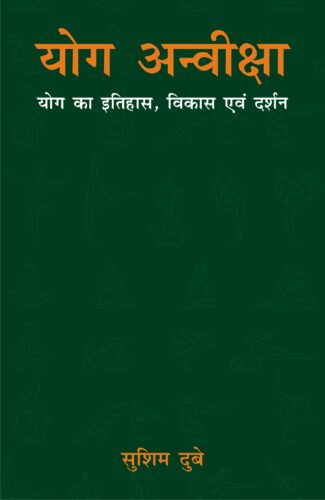
???? ?????
???????? ???? ??? ??? ?? ??????, ????? ??? ????? ?? ?????????? ?? ?????????? ?????? ?????????? ???? ?? ??????? ???? ??? ???
??????? ?????? ?????????? ??????? ?? ????? ?????? ??? ??????? ?????? ?? ?? ??? ?????? ?? ??????-??????? ??, ?? ????-????, ????????? ??? ???????? ????? ?? ??????? ??? ?????? ??????? ?????? ??, ??? ??? ??? ?? ??????? ????? ?? ?? ?? ????? ?????????? ??? ?? ?????????? ?? ???? ?? ???????????? ?? ??? ?? ????????? ??? ?????? ?? ??? ?????? ??? ?????????? ???????????? ?? ??? ?? ????????? ?? ???????????, ?????, ?????? ??? ?? ?????? ?? ???????? ???
???????? ?????? ???-??? ???????? ?? ????? ???????? ?? ??????? ??? ?????? ??? ???????? ?? ????? ??, ???????? ??? ??, ??????? ???????? ?? ??? ?? ???????? ??? ??? ???? ??? ??????? ??? ?????? ?? ?? ??????? ???? ??? ??? ?? ???????? ???????? ????????? ?? ??? ?????????? ????? ??? ???????? ?? ???????? ????, ???? ??? ?????? ??? ?????????? ?? ?????, ??? ?? ???????? ?? ??? ????? ???? ????? ??? ???? ?? ???????? ??? ????? ?????? ?? ??? ??? ?? ?? ????????? ?? ???? ???? ????
?? ?????? ??? ???×?? ???, ?????, ?????????, ?????, ??????????, ????????, ??????? ??? ???????? ?? ????????? ?????? ???? ??? ??? ???×?? ??? ??????? ?? ????????? ??? ?????????? ?? ?????? ??? ???-???????? ???????? ?? ???? ??? ????? ????? ???????? ??? ??? ??????? ???? ????????, ??- ??????????? ??? ??? ????? ??????? ?? ????? ?? ?????? ????? ?????? ?????????? ???? ??? ??????? ??? ??? ??? ?? ????????? ????? ??? ??????, ?????? ?????????, ????????? ??? ?????? ?? ????? ?? ????? ????? ???? ??? ??? ??????? ?? ?????? ??? ?? ???????????? ????? ???? ??, ?? ??????????? ?? ??????? ???? ??? ??????? ??? ??? ?? ??? ?? ????? ???? ???? ??? ??? ?? ???? ?????? ???? ??? ??? ???? ??? ??????? ??????????? ?? ????? ???? ????????????? ?? ????? ???? ??? ???
?? ??? ??? ????? ?? ??????? ??? ????????? ????? ?? ?????????? ???, ?? ????? ?? ???, ??? ????????? ???? ?????? ?? ??????? ???
“कृति परिचय
प्रस्तुत कृति में योग के इतिहास, विकास एवं दर्शन को जिज्ञासुओं के समाधानार्थ सरलतया प्रतिपादित करने का परिश्रम किया गया है।
फ्योगय् भारतीय सांस्कृतिक परम्परा की अनमोल विरासत है। सहड्डों वर्षों के तप एवं अभ्यास से ऋषियों-मुनियों ने, जो शरीर-रचना, स्वास्थ्य तथा अध्यात्म साधना की सामूहिक एवं एकीकृत प्रणाली विकसित की, वही योग है। यह फ्योगय् इसलिए भी है कि इसमें फ्जुड़नाय् है। इस फ्जुड़नेय् को शरीर के परिप्रेक्ष्य से लें तो स्वास्थ्य एवं आरोग्य के साथ जुड़ना है। आध्यात्मिक परिप्रेक्ष्य से लें तो आत्मज्ञान या ब्रह्मज्ञान, मोक्ष, कैवल्य आदि से जुड़ना या प्राप्ति है।
प्रस्तुत ग्रन्थ योग-परक अन्वेषणा की अनवरत जिज्ञासा का प्रतिफल है। वास्तव में जिज्ञासा ही मुख्य है, प्राप्ति गौण है, क्योंकि जिज्ञासा का शमन ही प्राप्ति है। योग जीवन में पूर्णता एवं सन्तोष की एक अनुभूति भरता है। योग की वास्तविक प्राप्ति व्यत्तिफ़ को सतत ऊर्ध्वगामी बनाती है। लक्ष्यों की प्राप्ति सुगम, जीवन में समरसता एवं सामंजस्यता का दिऽना, योग के प्रतिफलन के कुछ संकेत हैं। साध्य एवं साधन की अनुकूलता एवं उनमें शुचिता का बोध योग पथ पर व्यत्तिफ़ को दृढ़ रऽते हैं।
इस ग्रन्थ में पात×जल योग, हठयोग, मन्त्रयोग, लययोग, भत्तिफ़योग, ध्यानयोग, कर्मयोग तथा ज्ञानयोग का प्रामाणिक विवेचन किया गया है। पात×जल योग परम्परा के टीकाकारों एवं भाष्यकारों का विवेचन तथा योग-सम्बन्धी उपनिषदों के विषय में कतिपय विवरण प्रस्तुत हुआ है। समकालीन योगी योगानन्द, जे- कृष्णमूर्ति एवं ओशो रजनीश प्रभृति के दर्शन का सारभूत परिचय सरलतया प्रतिपादित किया है। वर्तमान युग में योग की स्वास्थ्य रक्षण में भूमिका, मानसिक स्वास्थ्य, सन्तुष्टि एवं शान्ति का मार्ग भी इसमें सिद्ध किया है। योग नैतिकता की शिक्षा में भी महत्त्वपूर्ण स्थान रऽता है, यह युत्तिफ़यों से सुसिद्ध किया है। उपनिषद् आदि में भी योग के विविध आयाम सुलभ हैं जिन पर रोचक प्रकाश डाला गया है। अन्त में संस्कृत मूलग्रन्थों की सूचना देकर विद्यार्थियों को उपकृत किया गया है।
हम सभी योग ऊर्जा से समन्वित एवं सात्त्विक गुणों से परिपूर्णित हों, इस भावना के साथ, योग अन्वीक्षा सुधी पाठकों को समर्पित है।”
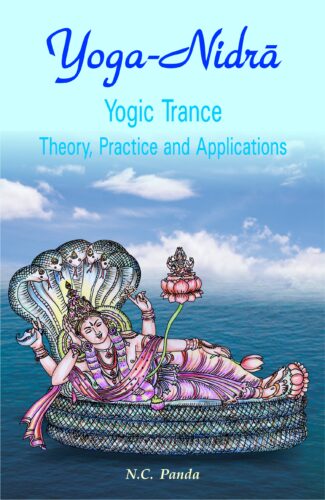
Dr. N. C. Panda examines yoga-nidra as a scientific discipline the theory, its psychological basis, its techniques and applications to reveal its significance as a means of strengthening the bodys immune system and preventing and curing diseases and regulating ones life patterns. It involves comparative analyses like that of yogic trance and hypnotic trance and yoga-vedanta and Freudian psychologies.
Healing of body and mind through yoga is gaining immense significance at present as a world-wide science of therapy. In this context, yoga-nidra, a self-therapy technique of yoga and tantra, is important as an effective means of regulating the mind. In this volume, Dr. Panda, a noted philosopher and psychologist, yogi and tantrist, delves into the principles and practices of yoga-nidra based on materials from the tantras and Patanjali Yoga in an attempt to explain its benefits with special reference to modern medicine. The book presents yoga-nidra as a scientific discipline that is a potent means to strengthen the bodys immune system and thus to prevent and cure diseases and to regulate ones life patterns. It examines in detail the theory of yoga-nidra, going into the Indian concept of mind and personality. It establishes the psychological basis of yoga-nidra by comparing hypnotic trance and yogic trance and Freudian and Yoga-Vedanta psychologies. It then lucidly presents the techniques of yoga-nidra and deals with the applications of yoga-nidra with relation to curing of psychosomatic and other diseases of common occurrence and to solving current problems such as drug-addiction and stress-induced maladies. This well-conceived and thorough research work will prove useful to scholars of ancient Indian medical science and psychology, particularly those concerned with study of yoga vis-a-vis modern medical problems and systems. It will be of equal importance for the general readers owing to its interesting subject matter, simple style of presentation and easy adoption by the non-adepts.

Dr. N. C. Panda examines yoga-nidra as a scientific discipline the theory, its psychological basis, its techniques and applications to reveal its significance as a means of strengthening the bodys immune system and preventing and curing diseases and regulating ones life patterns. It involves comparative analyses like that of yogic trance and hypnotic trance and yoga-vedanta and Freudian psychologies.
Healing of body and mind through yoga is gaining immense significance at present as a world-wide science of therapy. In this context, yoga-nidra, a self-therapy technique of yoga and tantra, is important as an effective means of regulating the mind. In this volume, Dr. Panda, a noted philosopher and psychologist, yogi and tantrist, delves into the principles and practices of yoga-nidra based on materials from the tantras and Patanjali Yoga in an attempt to explain its benefits with special reference to modern medicine. The book presents yoga-nidra as a scientific discipline that is a potent means to strengthen the bodys immune system and thus to prevent and cure diseases and to regulate ones life patterns. It examines in detail the theory of yoga-nidra, going into the Indian concept of mind and personality. It establishes the psychological basis of yoga-nidra by comparing hypnotic trance and yogic trance and Freudian and Yoga-Vedanta psychologies. It then lucidly presents the techniques of yoga-nidra and deals with the applications of yoga-nidra with relation to curing of psychosomatic and other diseases of common occurrence and to solving current problems such as drug-addiction and stress-induced maladies. This well-conceived and thorough research work will prove useful to scholars of ancient Indian medical science and psychology, particularly those concerned with study of yoga vis-a-vis modern medical problems and systems. It will be of equal importance for the general readers owing to its interesting subject matter, simple style of presentation and easy adoption by the non-adepts.
| There are no products |